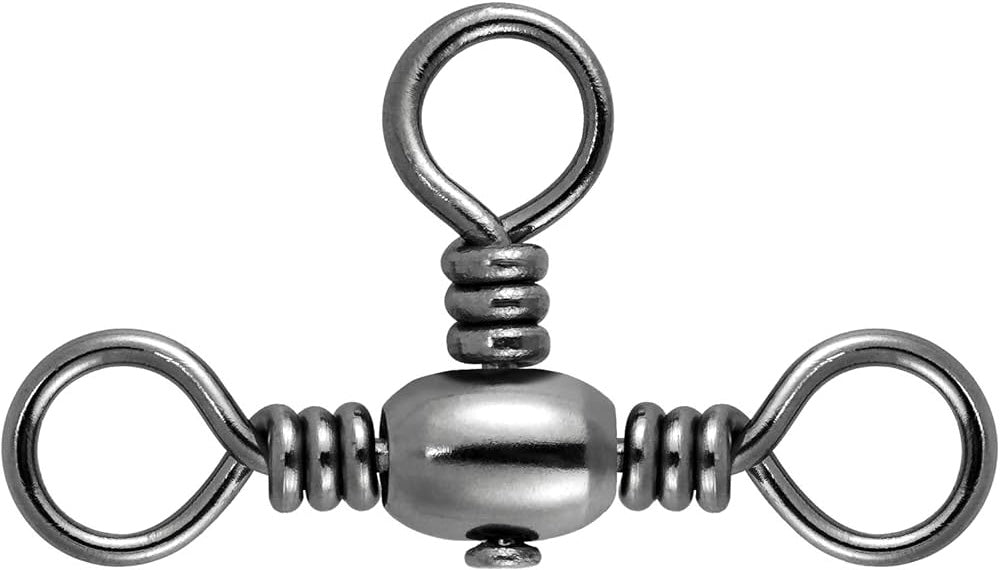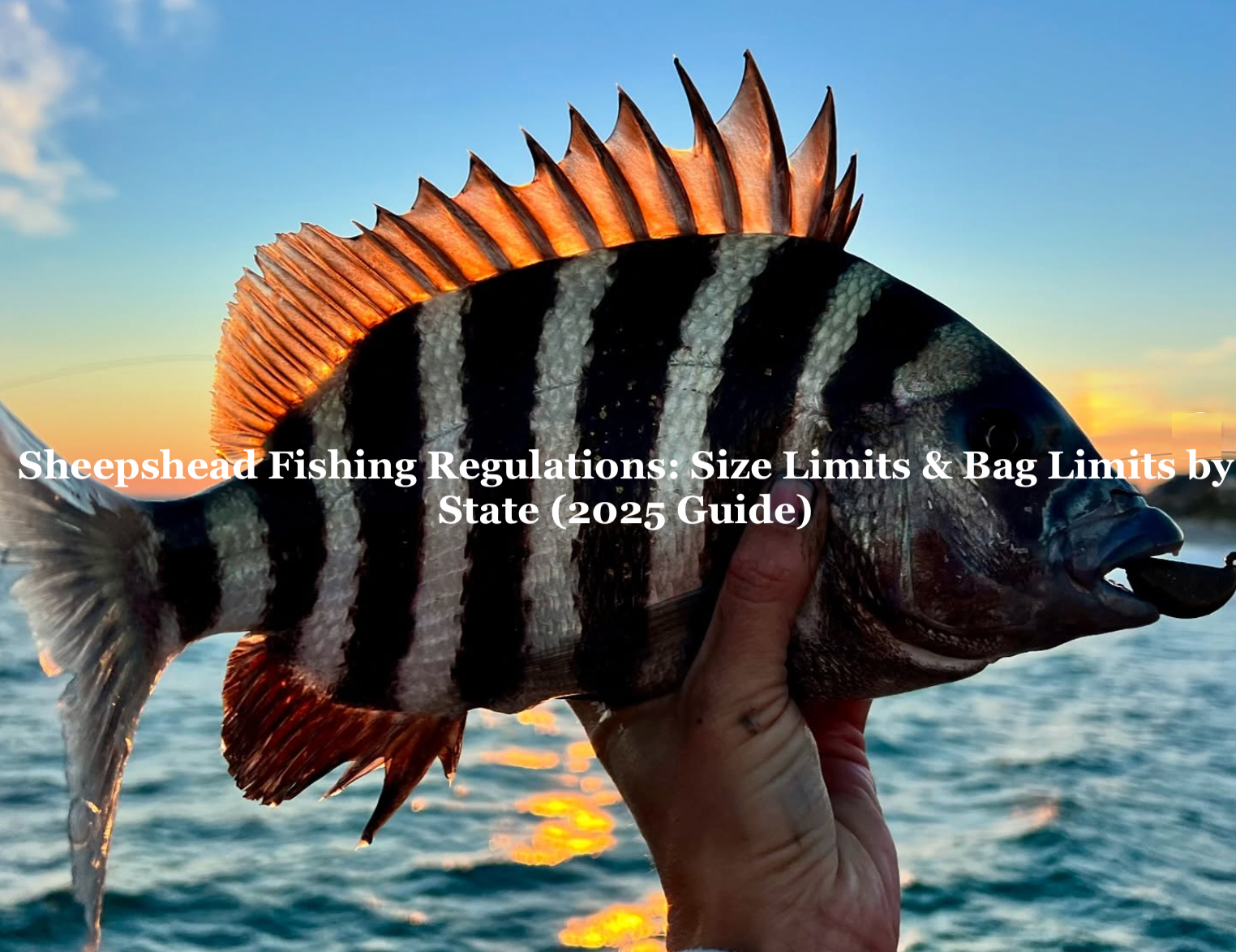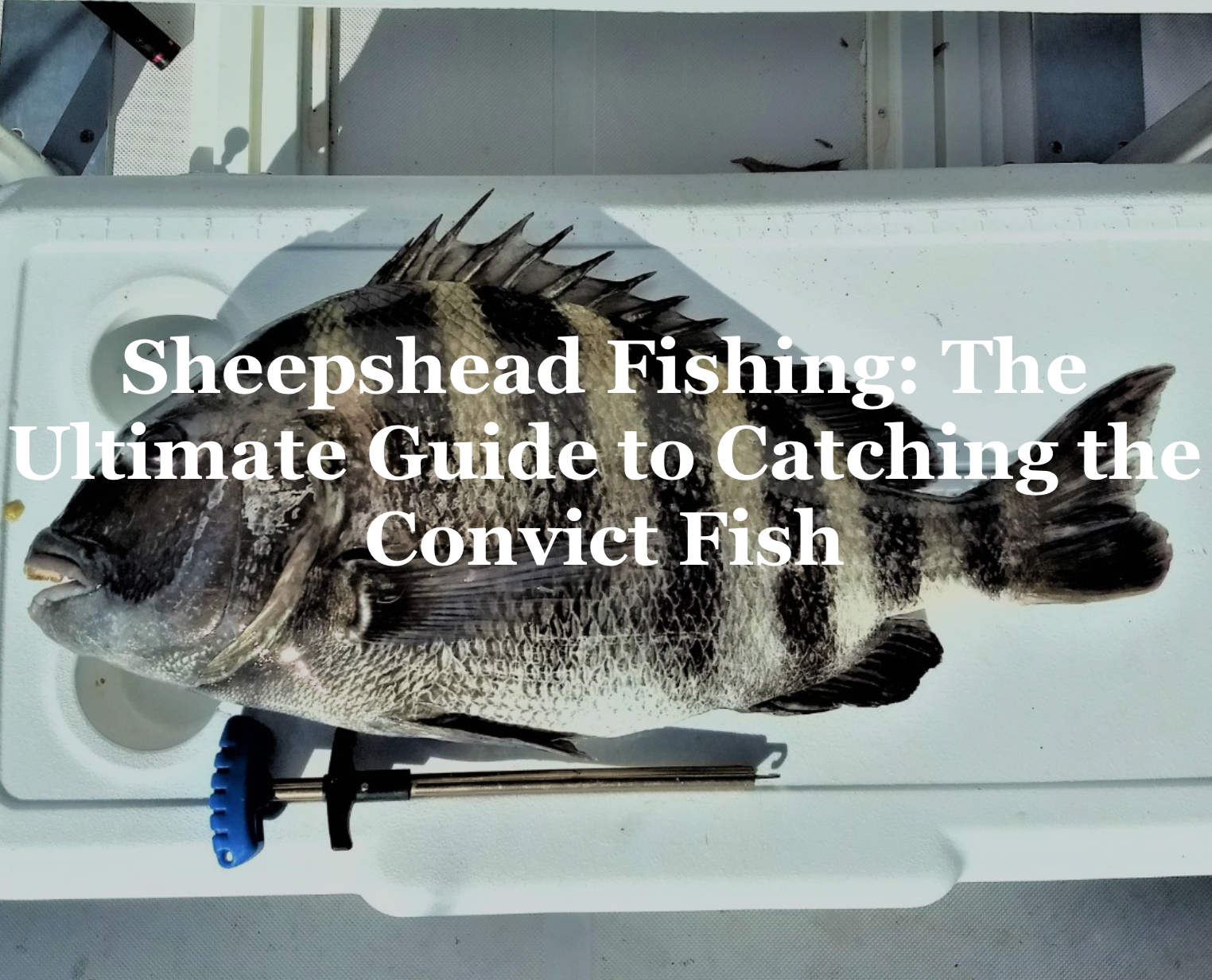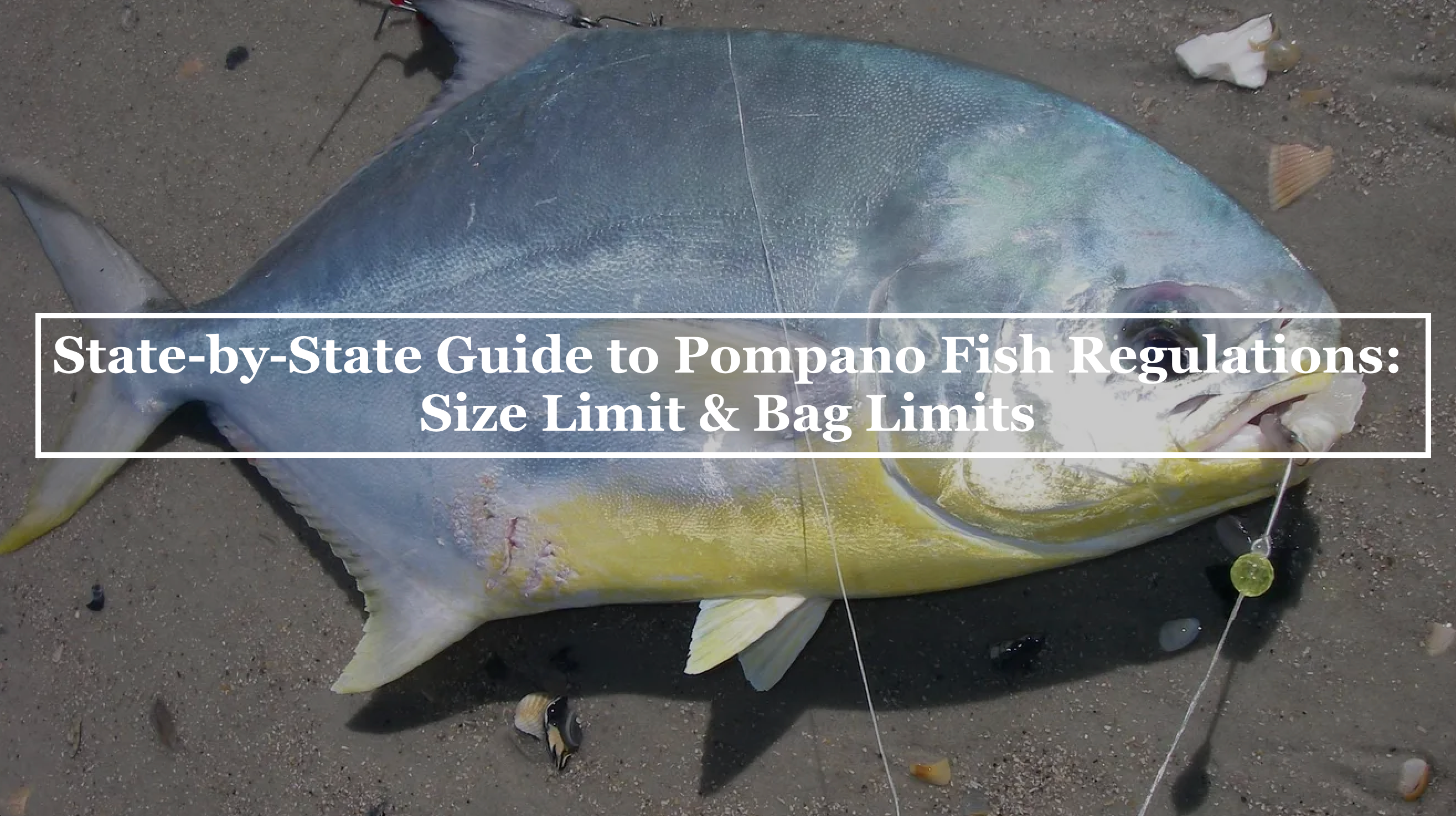Three-way swivels, also known as 3-way swivels, are essential fishing tackle components that allow anglers to create versatile and effective fishing rigs. These small but mighty devices connect multiple lines, enabling complex setups like the three-way rig, which is popular for targeting species such as catfish, redfish, and sheepshead. Whether you're a beginner or a seasoned angler, understanding how to use three-way fishing swivels can significantly improve your fishing success.
In this guide, we'll explore what three-way swivels are, their benefits, how to use them, and tips for choosing the best ones for your fishing needs. We'll also cover common setups and frequently asked questions to ensure you have all the information needed to master 3-way swivels.
What Are Three-Way Swivels?

A three-way swivel is a small, Y-shaped fishing accessory with three attachment points (or "eyes") that allow you to connect a main line, a leader with a hook, and a sinker or another line. This design prevents line twists, reduces tangles, and enables anglers to present bait or lures in a natural and effective manner.
Key Features of 3-Way Swivels
-
Material: Typically made from stainless steel, brass, or high-strength alloys for durability and corrosion resistance.
-
Size: Available in various sizes (e.g., #2, #4, #6) to match different line strengths and fish species.
-
Strength: Rated by pound-test strength (e.g., 20 lb, 50 lb) to handle different fishing conditions.
-
Design: Smooth, low-friction rotation to minimize line wear and twisting.
Three-way swivels are particularly valued for their ability to create rigs that keep bait or lures at specific depths or angles, making them ideal for bottom fishing, trolling, or drifting.
Why Use Three-Way Swivels in Fishing?

Using 3-way fishing swivels offers several advantages that can enhance your fishing experience:
-
Versatility: They allow anglers to create complex rigs, such as the three-way rig, for targeting multiple species in various environments (freshwater or saltwater).
-
Reduced Line Twist: The swivel's rotating design prevents the main line from twisting, which is common when using heavy sinkers or fast-moving lures.
-
Tangle Prevention: By separating the main line, leader, and sinker, three-way swivels minimize tangles, saving time and frustration.
-
Improved Presentation: They enable precise bait placement, ensuring a natural presentation that attracts fish.
-
Durability: High-quality three-way swivels are built to withstand harsh conditions, including saltwater corrosion and strong fish pulls.
These benefits make 3-way swivels a must-have for anglers targeting species like catfish, bass, trout, or even offshore game fish.
How to Use Three-Way Swivels: Step-by-Step Guide

Setting up a three-way fishing swivel is straightforward once you understand the components and their purpose. Below is a step-by-step guide to creating a classic three-way rig:
Materials Needed
-
Three-way swivel (appropriate size and strength)
-
Main fishing line (e.g., monofilament or braided line)
-
Leader line (for the hook or lure)
-
Sinker (e.g., bank sinker or egg sinker)
-
Hook or lure
-
Fishing rod and reel
Steps to Set Up a Three-Way Rig
-
Attach the Main Line: Tie the main line from your reel to one eye of the 3-way swivel using a strong knot, such as the Palomar or Improved Clinch knot.
-
Add the Leader Line: Tie a leader line (typically 12–24 inches long) to a second eye of the swivel. Attach a hook or lure to the end of the leader using a suitable knot.
-
Attach the Sinker Line: Tie a shorter line (6–12 inches) to the third eye of the swivel and attach a sinker. The sinker keeps the rig near the bottom or at the desired depth.
-
Bait the Hook: Add live bait (e.g., worms, minnows) or artificial bait to the hook, depending on your target species.
-
Cast and Fish: Cast the rig into your target area, let the sinker settle, and retrieve or let the bait drift naturally.
Tips for Success
-
Match Swivel Size to Line Strength: Use a swivel that matches the pound-test rating of your line to avoid breakage.
-
Adjust Leader Length: Longer leaders work better for suspended bait, while shorter ones are ideal for bottom fishing.
-
Check Knots: Ensure all knots are secure to prevent losing your rig during a fight with a fish.
This setup is perfect for three-way swivel fishing in rivers, lakes, or coastal waters, particularly for species that feed near the bottom.
Popular Fishing Rigs Using Three-Way Swivels

3-way swivels are incredibly versatile and can be used in various fishing rigs. Here are some popular setups:
Classic Three-Way Rig
-
Best For: Catfish, walleye, striped bass
-
Setup: Main line to swivel, leader with hook, and sinker on a dropper line.
-
Use Case: Bottom fishing in rivers or lakes with strong currents.
Trolling Rig
-
Best For: Salmon, trout, or offshore species
-
Setup: Main line to swivel, leader with a lure or spoon, and a weight or diving device on the dropper.
-
Use Case: Trolling at specific depths in open water.
Drift Fishing Rig
-
Best For: Steelhead, trout, or flounder
-
Setup: Similar to the classic rig but with a lighter sinker to allow the bait to drift naturally.
-
Use Case: Fishing in moving water where bait needs to move with the current.
Surf Fishing Rig
-
Best For: Redfish, pompano, or sharks
-
Setup: Heavy-duty three-way swivel with a long leader and pyramid sinker to hold against waves.
-
Use Case: Casting from the shore into the surf zone.
Each rig can be customized based on the target species, water conditions, and fishing technique, making three-way swivels a go-to choice for anglers.
Choosing the Best Three-Way Swivels

Selecting the right 3-way fishing swivels depends on your fishing environment, target species, and budget. Here are key factors to consider:
1. Material
-
Stainless Steel: Ideal for saltwater fishing due to its corrosion resistance.
-
Brass: Affordable and suitable for freshwater but less durable in saltwater.
-
Black Nickel: Offers a stealthy appearance, reducing visibility to fish.
2. Size and Strength
-
Choose a swivel size that matches your line's pound-test rating. For example:
-
Small swivels (#6–#10) for light lines (4–10 lb test) and panfish.
-
Medium swivels (#2–#4) for 10–20 lb test lines and bass or walleye.
-
Large swivels (#1/0–#3/0) for 20+ lb test lines and big game fish.
-
3. Brand Reputation
Some top brands for three-way swivels include:
-
Spro: Known for high-strength, corrosion-resistant swivels.
-
Mustad: Offers durable and affordable options for all fishing types.
-
Owner: Premium swivels for heavy-duty saltwater applications.
-
Eagle Claw: Budget-friendly swivels for casual anglers.
4. Price vs. Quality
While cheap swivels may save money upfront, investing in high-quality 3-way swivels ensures better performance and longevity, especially in challenging conditions.
Recommended Three-Way Swivels
-
Spro Power Swivel: High-strength, compact design for saltwater and freshwater.
-
Mustad 3-Way Cross-Line Swivel: Affordable and reliable for medium-duty rigs.
-
Owner Hyper Cross-Lock Swivel: Premium choice for big game fishing.
Common Mistakes to Avoid with 3 Way Swivels

Even experienced anglers can make mistakes when using three-way swivels. Here are some pitfalls to avoid:
-
Using the Wrong Size: A swivel that's too small may break under pressure, while one that's too large can spook fish.
-
Poor Knots: Weak or improper knots can lead to rig failure. Practice strong knots like the Palomar or Uni knot.
-
Overcomplicating Rigs: Keep setups simple to avoid tangles and ensure natural bait presentation.
-
Ignoring Conditions: Adjust swivel size and rig setup based on water current, depth, and target species.
By avoiding these mistakes, you'll get the most out of your 3-way fishing swivels.
Frequently Asked Questions About Three-Way Swivels

1. What is the difference between a three-way swivel and a barrel swivel?
A three-way swivel has three attachment points for complex rigs, while a barrel swivel has two points and is used primarily to reduce line twist in simpler setups.
2. Can I use three-way swivels in saltwater?
Yes, but choose corrosion-resistant materials like stainless steel or black nickel to withstand saltwater conditions.
3. What size three-way swivel should I use?
Match the swivel size to your line's pound-test rating and the target species. For example, use #4–#6 for bass and #1/0 for offshore fishing.
4. Are three-way swivels good for beginners?
Absolutely! They’re easy to use and versatile, making them ideal for beginners learning to set up fishing rigs.
5. Where can I buy three-way swivels?
You can find 3-way swivels at tackle shops, online retailers like Amazon, or directly from brands like Spro and Mustad.
Conclusion
Three-way swivels are a game-changer for anglers looking to create versatile, tangle-free fishing rigs. Whether you're targeting catfish in a river, trolling for salmon, or surf fishing for redfish, 3-way fishing swivels offer unmatched flexibility and performance. By choosing the right swivel, mastering the three-way rig, and following proper maintenance practices, you can elevate your fishing game.
Ready to try three-way swivels on your next fishing trip? Invest in high-quality swivels, experiment with different rigs, and watch your catch rate soar. Happy fishing!






Share:
Owen Lupton Drum Rig: The Ultimate Guide to Tying and Using